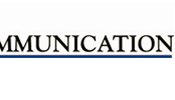

|
|
| Learn what to say... and what NEVER to say! |
|
|
Our PIE Model of Communication
|
You Only Have One Chance to Make a Great First Impression! By Edward Leigh, MA My wife, Beth, and I needed some home remodeling done; we did our homework and found three companies that were suitable matches for our needs. All three were equally capable of doing the job. We had representatives from the three companies visit our home. One representative knocked at the door and we found a very well-dressed young man. However, outside of the professional appearance, our first impressions were not good impressions. He did not extend his hand to shake; I had to make the first move. I did shake his hand, which was like holding a dead fish in my hand. He made little to no eye contact and his body language shouted "no enthusiasm or energy." His voice was a monotone. Did his company get our business? No. The young man failed to create a good first impression. Here are five top tips to help you create a great impression! Let Others Shine Let the person you are talking to be the center of attention. They are in the spotlight. One of the biggest mistakes people make when first meeting another person is to turn the conversation to themselves. Constantly talking about yourself will leave people with the impression you are self-centered. Of course, you could still discuss yourself, but do not overwhelm the conversation. For example, let’s say you are talking to someone about favorite restaurants. They may say, "I love that new Bistro on Main Street." You can respond with, "I have not been there, but will have to try it. I would also recommend the coffee shop that is next door." You are adding to the conversation without dominating. By allowing others to bask in the spotlight, you will not only appear to be gracious, but you will also learn more about the other person. This information could be very valuable in a business setting. Use the Person's Name in the Conversation People always say to me, "I can’t remember names." Yes, you can! One way to remember names is to use the person’s name in the conversation as you are speaking to them. When using a person’s name in the conversation, this not only helps you remember their name, this technique also makes people feel good. Everyone likes to hear their name! When I first meet people, I always make a habit of using their name in the conversation. For example, if I just met Maria, I would say, "Maria, I understand you used to work in England, tell me about that experience." When you take the time to learn a person’s name, you are telling them that you think they are important and valuable. Do Your Homework If you know in advance you will be meeting someone, do some research on the person. I do my research in a variety of ways. If other people know the person I am about to meet, I ask about their impressions. People often can provide great insight. They might say, "He loves golf. Ask him about his golf game." If I am meeting a person who works for a certain company, I will learn about the company. If I read that the company had a great year or won a special award, I would comment on that in the conversation. If you are meeting to discuss business be sure you are organized and have all the appropriate materials, such as samples, brochures, pricing information, business cards, etc. Be a Great Listener When engaged in conversation, listen to the other person as though you had to summarize the gist of their words at a later time. I am not saying to focus on memorizing, rather look for key points. This technique keeps me focused on the person. Provide nonverbal and verbal cues to let the other person know you are listening, such as an occasional head nod or stating, "I understand." Feel free to ask questions or make comments. For example, if someone is telling you about their recent cruise, you may ask, "That sounds very exciting, tell me more about the island excursions." Look the Part You do not have to wear the latest designer clothes; the critical issue is to dress modestly and appropriately for workplace situations. Of course, be sure your clothing is clean and fits well. The last thing you want is to give off a bad impression before you even utter a word. If you look sloppy, people will assume that you and your organization are sloppy as well. Different settings require different attire. Of course, a business meeting would require business attire. However, sometimes we may need to do some checking. If a client invites me to a "business casual" event, I always check to see what is the appropriate attire. My meaning of the term may different from theirs. If I am not sure, I always play it safe by dressing a bit more formal. If your workplace has a "dress down" day, be sure to determine what exactly that entails. Ask what is appropriate. I heard one speaker make an excellent observation, "Casual Friday does not mean Home Depot® Saturday!" Looking the part also means having a strong and confident posture, good eye contact and, most importantly, a positive attitude. A wonderful workplace relationship starts or ends with the very first conversation. Taking time to prepare properly and remember all the essential steps to form positive impressions create successful long-term outcomes. Getting it right the first time can make the difference between establishing the groundwork for a mutually beneficial workplace relationship or having the window of opportunity closed forever. |
The Center for Healthcare Communication • P.O. Box 18819 • Cleveland, Ohio 44118-0819 USA Site designed by I Am Orange Media Group |